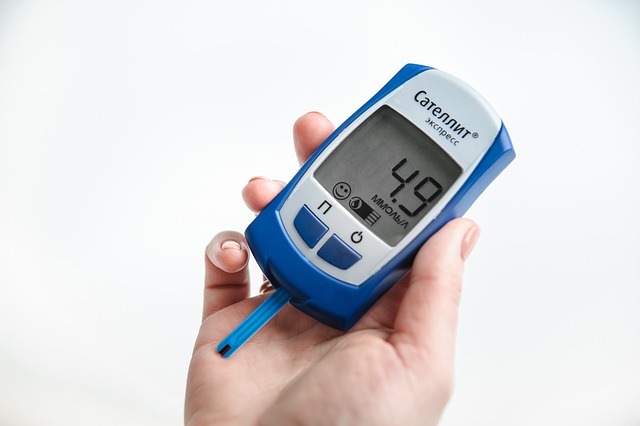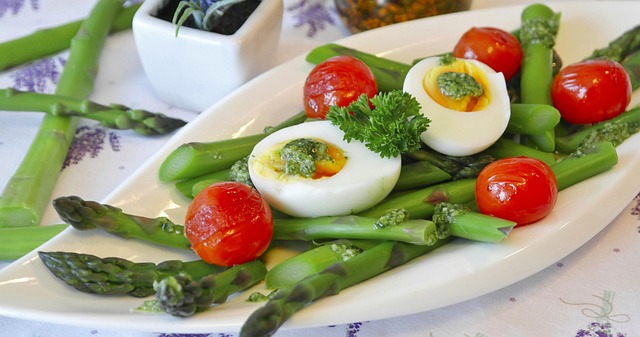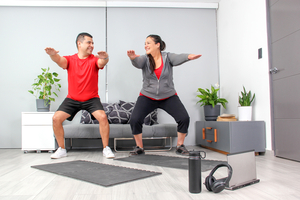In this article:
- Sodium is an essential nutrient, but most people consume too much, which can increase the risk of high blood pressure and cardiovascular disease.
- The most common sources of sodium in the typical American diet include bread, processed meats and cheese, and canned goods.
- When grocery shopping, select naturally low-sodium foods like vegetables, fruit, and unprocessed grains and proteins. Look for low-sodium versions of other foods like canned goods and snack foods.
- Check nutrition labels at the store and when going to restaurants to find lower-sodium options. You can also reduce portion sizes to get less sodium.
- Reduce sodium when preparing and consuming food by using less salt in recipes, adding herbs and spices for flavor, and adding less salt at the table.
- Lark can help you manage weight with or without GLP-1s as you log food, get tips for eating healthier, and make small changes that can turn into healthy habits.
Sodium is an essential mineral, but most Americans get more than they need. Too much sodium can raise blood pressure and increase the risk of heart disease. You can reduce sodium levels by knowing which foods are highest in sodium, selecting lower-sodium foods, and preparing foods in healthier ways. Here are tips for reducing sodium intake while keeping flavor high.
How Sodium Affects the Body
Sodium is an essential nutrient for fluid balance in your body. It’s also essential for proper nerve and muscle function. However, too much sodium can increase the risk of hypertension, or high blood pressure.
Hypertension is a risk factor for cardiovascular disease, and the Dietary Guidelines for Americans say that it affects 45% of adults, including 55% of adults 45-59 years of age and 75% of adults over 60 years of age.
How Much Sodium Per Day?
The adequate intake of sodium is 1,500 mg per day, though most adults get far more. The National Academies has set a daily limit of 2,300 mg of sodium per day for healthy adults, which is an amount known as the cardiovascular risk reduction (CDRR) level. That’s the daily value you’ll see on nutrition facts panels, and it’s the amount most adults should aim to have.
According to the Food and Drug Administration, or FDA, more than 80% of adults have more than that. In fact, the typical American adult has 3,393 mg of sodium per day, which is more than twice the necessary amount.
Sources of Sodium
Where is this sodium coming from? Some foods naturally contain sodium. For example, a cup of milk, a 4-ounce portion of chicken, a 3-ounce portion of fish, two eggs, and a cup of celery each have about 100 mg of sodium.
However, the greatest sources of sodium in the typical American diet are other foods, especially salty foods. The Dietary Guidelines for Americans say that 40% of sodium comes from the following 10 foods.
- Sandwiches with deli meat
- Pizza
- Burritos and tacos
- Soups
- Savory snacks like chips, pretzels, and flavored popcorn
- Poultry
- Pasta mixed dishes
- Burgers
Other high-sodium foods include cheese, pickles, canned beans, canned tuna, and olives.
Processed and prepared foods can be high in sodium, too. For example, non-starchy vegetables contribute 7% of Americans’ sodium, likely because of items like canned vegetables with added salt, salads with dressing, cooked vegetables with sauces and salty seasonings, and high-sodium dishes that contain vegetables.
Selecting Lower-Sodium Foods in Supermarkets
Grocery shopping is an opportunity to lower the sodium content of your diet. The FDA suggests that you choose foods that are less processed and read food labels to find lower-sodium options.
Choosing Less Processed and Naturally Low-Sodium Foods
Naturally low-sodium foods include vegetables, herbs, fruit, dried beans, dried peas, and plain grains like oats, barley, rice, brown rice, and whole-grain pasta. Tofu, yogurt, chicken, shrimp, and fish are also good options.
Though foods like poultry, fish, and eggs have some sodium, the content is low compared to more processed options. For example, a 4-ounce serving of ground turkey has 90 mg of sodium, while a 2-ounce serving of turkey sausage has 420 mg of sodium.
In general, less processed foods are lower in sodium than more processed foods. That’s because salt is often added as a preservative and for flavor. Here are some examples of foods you can choose that tend to be lower in sodium than alternatives.
- Fresh or frozen vegetables instead of canned vegetables
- Plain chicken, ground turkey, or seafood rather than marinated or seasoned choices
- Oatmeal instead of cold breakfast cereal
- Vegetables, grains, and proteins that you cook yourself rather than purchasing frozen meals
- Fresh herbs like ginger, cilantro, parsley, dill, and thyme, as well as dried herbs and spices instead of seasoning mixes and seasoned salt
Choosing Low-Sodium or Salt-Free Foods
Many processed foods come in low-sodium or reduced-sodium versions. The Department of Health and Human Services (DHHS) suggests looking for such options when buying food.
Here are some examples.
- Low-sodium canned or pouch tuna
- Low-sodium or no salt added canned beans
- Low-sodium canned soup
- Low-sodium broth and bouillon
- Low-sodium vegetable juice
- Whole-grain corn tortillas and some brands of whole-wheat pita
- Unsalted butter or margarine
- No salt added canned vegetables
- Low-sodium or light soy sauce, salad dressing, and other condiments
- Salt-free seasoning blends and packets
- Unsalted or lightly salted snack foods like nuts, peanuts, and whole-grain crackers
Food Labels and Sodium Content
You can use food labels to help you reduce sodium. Sodium content is on nutrition facts panels. It’s listed in milligrams (mg) and % daily value (DV) where DV is 2,300 mg of sodium per day.
The amount of sodium is listed for a serving of the food, so be sure to check the serving size when looking at sodium content.
Here are additional tips when using food labels to help you reduce sodium consumption.
- Choose foods with less than 5% of the daily value of sodium
- Look for foods labeled “low-sodium” or “no salt added”
- Check the list of ingredients for sources of sodium like salt, sodium nitrate, and MSG (monosodium glutamate)
Tips for Reducing Sodium While Cooking and Preparing Food at Home
When you prepare food at home, you can keep sodium content low from kitchen to table.
Here are some ways to do this.
- Cook from scratch instead of using pre-packaged or processed ingredients
- Rinse canned beans before using them in recipes
- Use spices and herbs instead of salt to add more flavor while cooking or at the table. Experiment with different combinations
- When cooking, use less salt than the recipe calls for or than you usually do. Taste your food and try different spices before adding more salt
- Taste your food at the table before adding salt
You can also reduce sodium while preparing food at home by making your own sauces and condiments. Here are a few examples.
- Tomato sauce with fresh or low-sodium canned tomatoes, onion, garlic, olive oil, fresh or dried basil and oregano, black pepper, and optional vegetables like mushrooms and bell peppers
- Salsa with chopped tomatoes or tomatillos, onions, cilantro, jalapeno to taste, lime juice, and garlic
- Salad dressing with olive oil, balsamic, red or white wine, apple cider vinegar or lemon juice, dijon mustard, black pepper, and herbs like rosemary, Italian herbs, parsley, and dill
Reducing Sodium at Restaurants
Restaurant meals can be high in sodium, but you can reduce the amount you get.
Here are some tips.
- Check the nutrition information of menu items online or at the restaurant, and choose lower-sodium options that fit into your health eating plan
- Ask your server for the chef to add less salt or for foods to be unsalted
- Ask for sauces, dressings, and condiments on the side
- Avoid table salt or add less salt at the table
- Select items that you know are lower in salt, like fresh fruit and salads without dressing Smaller portions are always lower in sodium than larger portions.
How Lark Can Help
It’s possible to reduce sodium and enjoy tasty foods, and Lark can help you select nutritious foods that can help you reach health and weight loss goals. Your Lark coach is available 24/7 for nutrition and physical activity coaching and tracking. Lark can help you make healthy choices and establish habits that fit into your lifestyle so you can lose weight and keep it off with or without GLP-1 medications.
Click here to see if you may be eligible to join Lark today!











.webp)






